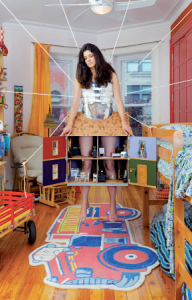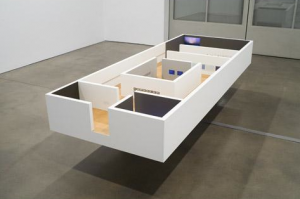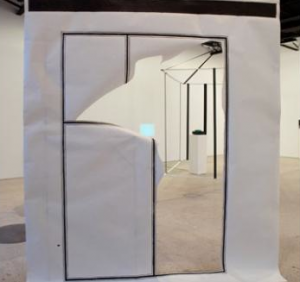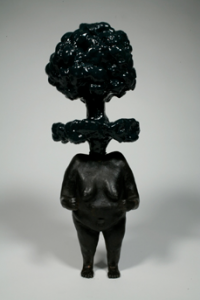
Tied together only by an amazingly adaptable title, Janine Antoni’s new photography, sculpture and installation leap from theme to theme — new motherhood, Hurricane Katrina, a cheeky re-imagining of the female anatomy — in an ad hoc exploration of intimacy and/ or adversity. Though some of her best-known artwork has delved into her relationship with her mother, Antoni is frustratingly ambivalent about her own connection with her young daughter. Ironically, it’s when Antoni herself seems to be acting juvenile, in a piece that has her urinating from the top of the Chrysler Building, that her work is most resonant.
At the gallery entrance, a photo of Antoni’s toddler poking a spoon at her mother’s exposed navel portrays the artist as authority figure, so it’s startling to encounter an image of her using a bronze, shoehorn-shaped gargoyle as a substitute penis to direct a stream of urine in a hilarious piss take of the adolescent male urge to mark territory. Less daring than Margaret Bourke-White’s famous perch atop the Chrysler’s eagles, more restrained than Lynda Benglis’s raunchy posturing, Antoni’s absurd gesture is nevertheless empowering, removing one more obstacle between the sexes.
The show’s final two pieces are less original. A damaged wrecking ball coupled with a close-up projection of an eyeball blinking to resounding booms is a one-dimensional parable of destruction in the blink of an eye and too closely tied to the context of its debut at “Prospect 1” in New Orleans. In a final photo collage, Antoni hovers, spider-like, from a rope web wearing a doll house as skirt, her flesh filling rooms and pressing against tiny furniture in a beautifully succinct illustration of motherly overbearing. But it’s not clear what Antoni’s getting at with the spider reference (and hard not to compare with Louise Bourgeois’s powerful Maman), while the martyr-like pose she strikes doesn’t say anything new about mothers’ sacrifice. We’re extended a tantalizing invitation into the intimacy of her personal experience but come away unenlightened.
Originally published in Flash Art International, no 267, November – December 2009.



